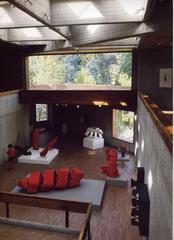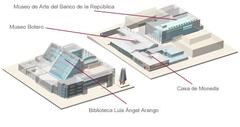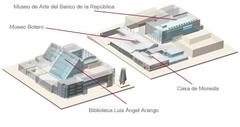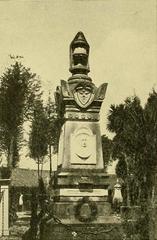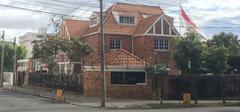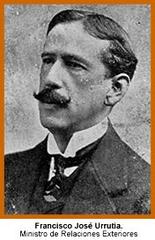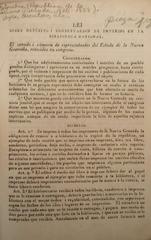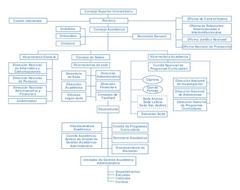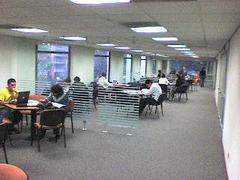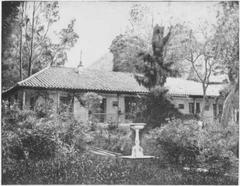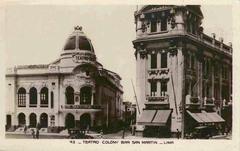
Sumapaz Natural Park Visiting Hours, Tickets, and Travel Guide
Date: 04/07/2025
Introduction to Sumapaz Natural Park
Located in the Eastern Andes of Colombia, Sumapaz Natural Park is renowned as the world’s largest páramo ecosystem. Spanning over 3,150 square kilometers, this high-altitude moorland—often referred to as a “water factory”—is essential for the water supply of Bogotá and surrounding communities, serving more than two million people. The park combines dramatic natural landscapes with deep-rooted cultural heritage, particularly that of the indigenous Muisca civilization, whose traditions continue to shape the region.
This guide provides essential information on visiting hours, ticketing, hiking trails, attractions, and responsible travel, while also shedding light on Sumapaz’s ecological treasures and conservation challenges. Whether you are drawn to its biodiversity, cultural significance, or outdoor adventure, understanding the park’s history, environmental importance, and community engagement will enrich your visit and support ongoing preservation efforts.
For official updates and visitor resources, see Parques Nacionales Naturales de Colombia, as well as community platforms like Sumapaz Vive. Embark on a journey where nature’s splendor and Colombia’s living heritage converge (bnbcolombia.com; nationalparksassociation.org; Sumapaz Vive).
Table of Contents
- Introduction: Why Visit Sumapaz?
- Historical and Cultural Heritage
- Ecological Significance and Biodiversity
- Visitor Information
- Conservation and Community Engagement
- Frequently Asked Questions (FAQs)
- Conclusion and Resources
Why Visit Sumapaz?
Sumapaz is not just the world’s largest páramo; it is also a critical water source for the capital region and a stronghold of Andean biodiversity. Its landscapes—frailejón fields, glacial lakes, and misty peaks—offer breathtaking scenery and unique wildlife. The park is deeply intertwined with the history and spirituality of the Muisca people, making it a destination for nature lovers, cultural travelers, and anyone seeking adventure in a landscape of global significance.
Historical and Cultural Heritage
Muisca Civilization and Sacred Sites
Long before Spanish colonization, the Muisca people inhabited the Eastern Andes, including the Sumapaz region. As skilled agriculturalists, they adapted to the challenging páramo environment by cultivating potatoes, maize, and quinoa, and managing water through sophisticated systems (bnbcolombia.com). Sacred lagoons like Laguna Chisacá and Laguna Los Tunjos were sites of spiritual ceremonies and offerings, with mountains and water sources revered as living entities (nationalparksassociation.org).
Colonial Era and Cultural Resilience
The Spanish conquest in the 16th century disrupted indigenous land use and spiritual traditions. Despite these changes, indigenous communities maintained a presence through oral histories, rituals, and environmental stewardship. The páramo’s remote, challenging terrain offered refuge, allowing traditional practices to persist. Today, the cultural legacy of the Muisca is celebrated through festivals, crafts, and community ecotourism (bnbcolombia.com; veronikasadventure.com).
Ecological Significance and Biodiversity
Flora and Fauna
Sumapaz is a biodiversity hotspot. Its páramo ecosystem is dominated by the iconic frailejón (Espeletia spp.), which plays a vital role in water regulation. The park is home to over 897 plant species and 260 species of mammals, including the endangered mountain tapir and spectacled bear. Birdwatchers can spot rare species such as the Bogotá rail and Andean condor (Sumapaz Vive; Sula).
Conservation Challenges
Threats to Sumapaz include agricultural expansion, mining, climate change, and post-conflict land use (The Revelator; Nature). Unsustainable farming and grazing degrade native vegetation and water sources, while illegal mining pollutes soils and waterways. Climate change poses existential risks to the páramo’s fragile hydrology and endemic species.
Efforts to protect Sumapaz involve legal frameworks, community-based conservation, scientific research, and international support (Sumapaz Vive; Biology Insights).
Visitor Information
Key Attractions and Hiking Trails
- Laguna de Chisacá Trail: Moderate hike (6 km round-trip) to a sacred glacial lagoon.
- Laguna de Los Colorados: Challenging trail through remote páramo landscapes.
- Frailejón Fields: Expanses of endemic plants, central to the páramo’s ecology.
- Muisca Sacred Sites: Ceremonial lagoons and archaeological remains, some accessible by guided tour.
Guided tours are available through operators like FreeTour.com and provide ecological interpretation and cultural insights.
Birdwatching and Wildlife
With over 200 bird species, including endemics and migratory birds, Sumapaz is a prime destination for birdwatchers. Early morning hikes offer the best chance to spot mammals such as deer and tapirs.
Visiting Hours and Ticketing
- Hours: Typically open daily from 7:00 AM to 5:00 PM, though times may vary by season or area.
- Tickets: As of 2025, entrance is free, but visitors must register at the entrance. Some tours or specific activities may have associated costs.
- Permit Zones: Some sensitive or sacred areas require advance permission for access, especially for research or overnight stays.
How to Get There and Accessibility
- Access: Main entry via Usme district, about 40 km south of Bogotá. Travel by private vehicle or organized tour is recommended, as public transport is limited.
- Travel Time: 1.5 to 3 hours from Bogotá, depending on traffic and road conditions.
- Accessibility: Terrain is rugged and not fully wheelchair accessible; visitors should be prepared for high altitudes and challenging trails.
Gear and Health Tips
- Essentials: Waterproof boots, layered clothing, rain gear, sun protection, water, snacks, and optional walking poles.
- Health: Acclimatize in Bogotá before hiking. Be aware of altitude sickness symptoms (headache, shortness of breath). Carry personal medications and inform guides of any health concerns.
Responsible Tourism Guidelines
- Stay on marked trails to protect sensitive vegetation.
- Carry out all trash and avoid single-use plastics.
- Do not pick plants or disturb wildlife.
- Respect local customs and sacred sites; seek permission before photographing people.
- Use authorized guides and support local ecotourism initiatives (baquianos.com; Sumapaz Vive).
Conservation and Community Engagement
Conservation Threats
Sumapaz faces ongoing challenges:
- Agriculture and Livestock: Expansion threatens native flora and hydrology (The Revelator).
- Mining: Both legal and illegal mining degrade soils and water quality.
- Tourism Pressure: Unregulated visitation can cause erosion and habitat disturbance (Sula).
- Post-Conflict Dynamics: Landmines, returning communities, and governance issues complicate conservation (Nature).
Community and Restoration Initiatives
Local communities and organizations like Sumapaz Vive promote sustainable ecotourism, environmental education, and participatory management. Restoration efforts focus on replanting frailejones, wetland rehabilitation, and scientific research (Sumapaz Vive; Biology Insights).
Frequently Asked Questions (FAQs)
Q: What are the park’s visiting hours?
A: 7:00 AM to 5:00 PM daily; check the official website for seasonal updates.
Q: Is there an entrance fee?
A: No entrance fee as of 2025, but registration at the entrance is required.
Q: Are guided tours available?
A: Yes, guided tours are highly recommended for safety and ecological learning.
Q: What is the best time to visit?
A: Dry season (December–March, July–August) offers optimal conditions.
Q: How do I get there from Bogotá?
A: By private vehicle or organized tour via Usme district; expect a 1.5–3 hour journey.
Q: What should I bring?
A: Waterproof boots, layered clothing, rain gear, sun protection, water, and snacks.
Q: Are drones or camping allowed?
A: Drones are generally prohibited. Camping is restricted; check with park authorities for designated areas.
Conclusion
Sumapaz Natural Park is a sanctuary of biodiversity and a living testament to Colombia’s indigenous and ecological heritage. Visitors play a vital role in its preservation by adhering to responsible travel practices, supporting local communities, and respecting the land’s natural and cultural significance. Careful planning, use of official resources, and engagement with community-led tourism ensure that your visit contributes to the ongoing protection of this irreplaceable landscape.
Download the Audiala app for the latest visitor information, guided tour options, and offline maps. Stay connected through Sumapaz Vive and Parques Nacionales Naturales de Colombia for updates on conservation efforts and cultural events. By visiting responsibly, you help safeguard Sumapaz for generations to come (The Revelator; Veronika’s Adventure).
References and Further Reading
- Sumapaz Paramo National Park, BNB Colombia
- Sumapaz National Park, National Parks Association
- The Biggest Páramo on Earth: Sumapaz, Veronika’s Adventure
- Sumapaz National Natural Park, Parques Nacionales Naturales de Colombia
- Sumapaz Vive
- Paramo Threats Hotspot, The Revelator
- Paramó of Sumapaz, Sula
- Innovative Strategies for Conservation and Species Recovery, Biology Insights
- FreeTour.com – Sumapaz Moorlands Hike Tour
- Baquianos – Sumapaz How to Get
- Colombia Tourist Attractions – Paramó Sumapaz
- PowerTraveller – Hike Tour Sumapaz Páramo



